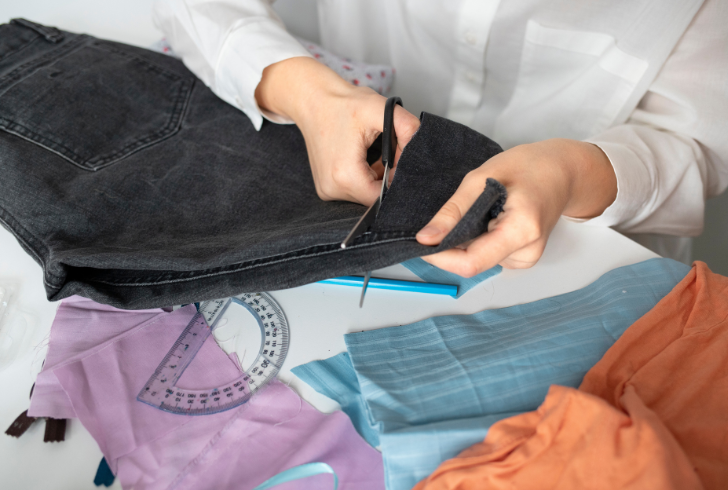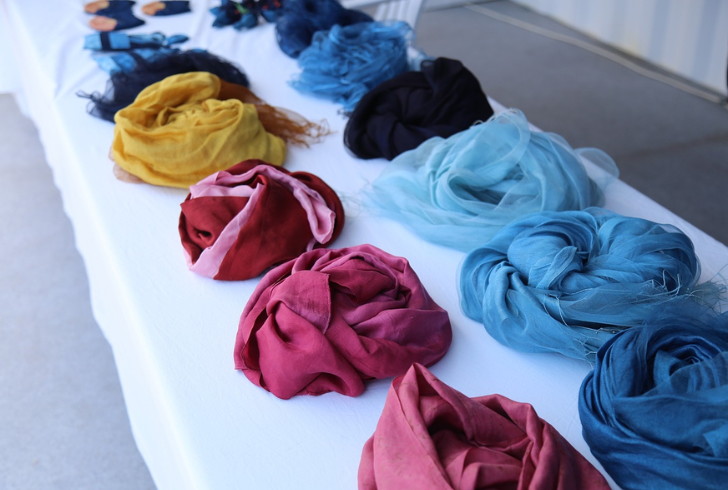As we usher in 2024, the fashion world finds itself at a crucial crossroads. Despite its glitz and glam, the industry often lags in meeting climate targets, highlighting a pressing need for substantial change. A Stand.Earth report underscores this reality, revealing that only a fraction of major brands are on track to slash greenhouse gas emissions sufficiently to keep global warming under 1.5 degrees Celsius.
But fear not, fashionistas and planet lovers alike! We’re on the cusp of a transformative era where style meets sustainability. Let’s dive into six groundbreaking ways the fashion industry is gearing up to become more eco-friendly this year.
The Legislative Leap Forward

At last, the calls for legislative action in the fashion industry have been answered. The European Union’s groundbreaking eco-design legislation, poised for formal adoption in early 2024, is a game-changer.
It’s not just about banning the destruction of unsold textiles and footwear; this legislation also emphasizes the durability, reusability, and repairability of products. Plus, with digital product passports, we’re stepping into an era of unprecedented transparency about the environmental impact of our fashion choices.
Tailored for Tomorrow: The Rise of On-Demand Fashion
Picture this: a world where overproduction in fashion is a thing of the past. An estimated 10 to 45% of clothes never even find a home. The solution? On-demand manufacturing.
Brands like Weekday and Desigual are pioneering this approach, while Unspun’s collaboration with Eckhaus Latta for their Spring 2024 collection showcases the magic of 3D technology—clothes crafted from yarn on demand.
This isn’t just innovation; it’s a revolution in making fashion sustainable and consumer-centric.
Dyeing to be Green

It’s time to say goodbye to the days when dyeing meant polluting. The fashion world is witnessing an influx of eco-friendly dyes, transforming the industry’s impact on our waterways.
From Pangaia’s utilization of bacterial dyes to Nike x Billie Eilish’s algae-based dye collaboration, and even Air-Ink’s innovative pollution-turned-dyes, we’re seeing a vibrant yet responsible color palette emerging in fashion.
Seaweed: The Unsung Hero of Sustainable Fashion
Move over, mushroom-based leathers; seaweed is stealing the spotlight. Stella McCartney’s introduction of the seaweed-based yarn Kelsun in her Spring 2024 collection marked a significant moment for sustainable fashion.
With brands like Another Tomorrow joining the fray with SeaCell, created from responsibly harvested Icelandic seaweed, it’s clear that this underwater wonder is making waves above the surface.
Revolutionizing Recycling: The Blended Fabric Breakthrough
The recycling conundrum in fashion, particularly with blended fabrics, has long been a stumbling block. But companies like Circ are paving the way for a greener future. Their groundbreaking technology efficiently separates polycotton materials, making recycling more feasible than ever. Mara Hoffman’s recent showcase of a dress utilizing Circ’s technology is just the tip of the iceberg.
A Fair and Just Transition

Innovations and technological advancements are vital, but they must not overshadow the human aspect of fashion. As the industry pivots towards sustainable practices, it’s crucial to ensure that the rights and livelihoods of garment workers are safeguarded.
A staggering 93% of brands are not providing a living wage to these workers. It’s imperative that as we embrace new technologies and models like on-demand manufacturing, we also commit to a just transition that guarantees job security and fair wages.
As Samata Pattison, founder of Black Pearl, aptly puts it, “Success in sustainability is a collective effort. We need unity among competitors, a shared vision for a greener future.” Dio Kurazawa of The Bear Scouts echoes this sentiment, emphasizing the importance of supporting innovative solutions that drive the industry closer to true circularity.
As we stride into 2024, these six strategies offer a beacon of hope and a roadmap for the fashion industry to not only meet its climate targets but to set new standards in sustainability. Let’s embrace this journey with open arms and wardrobes ready for change!




